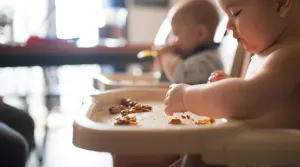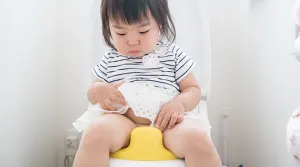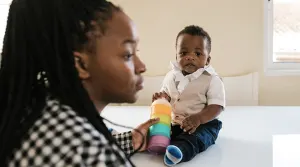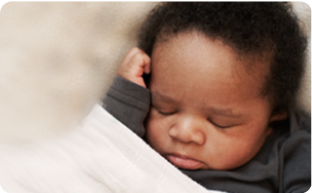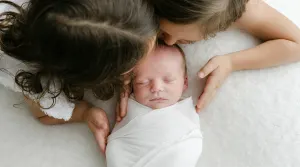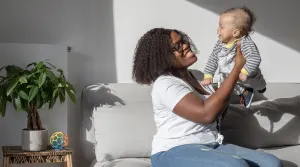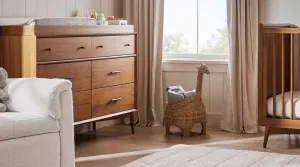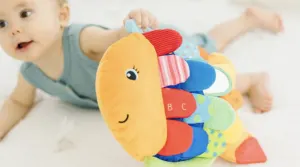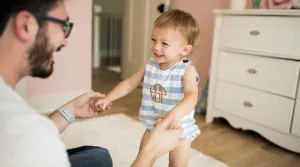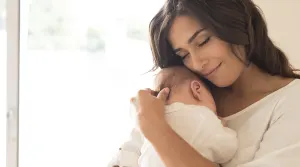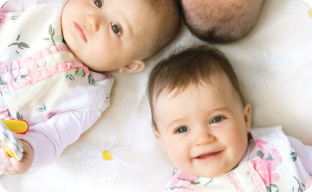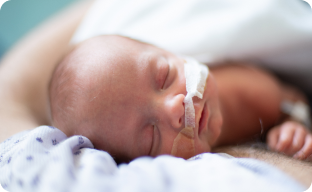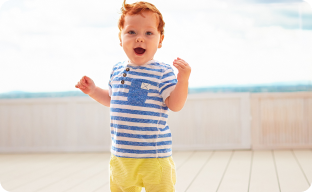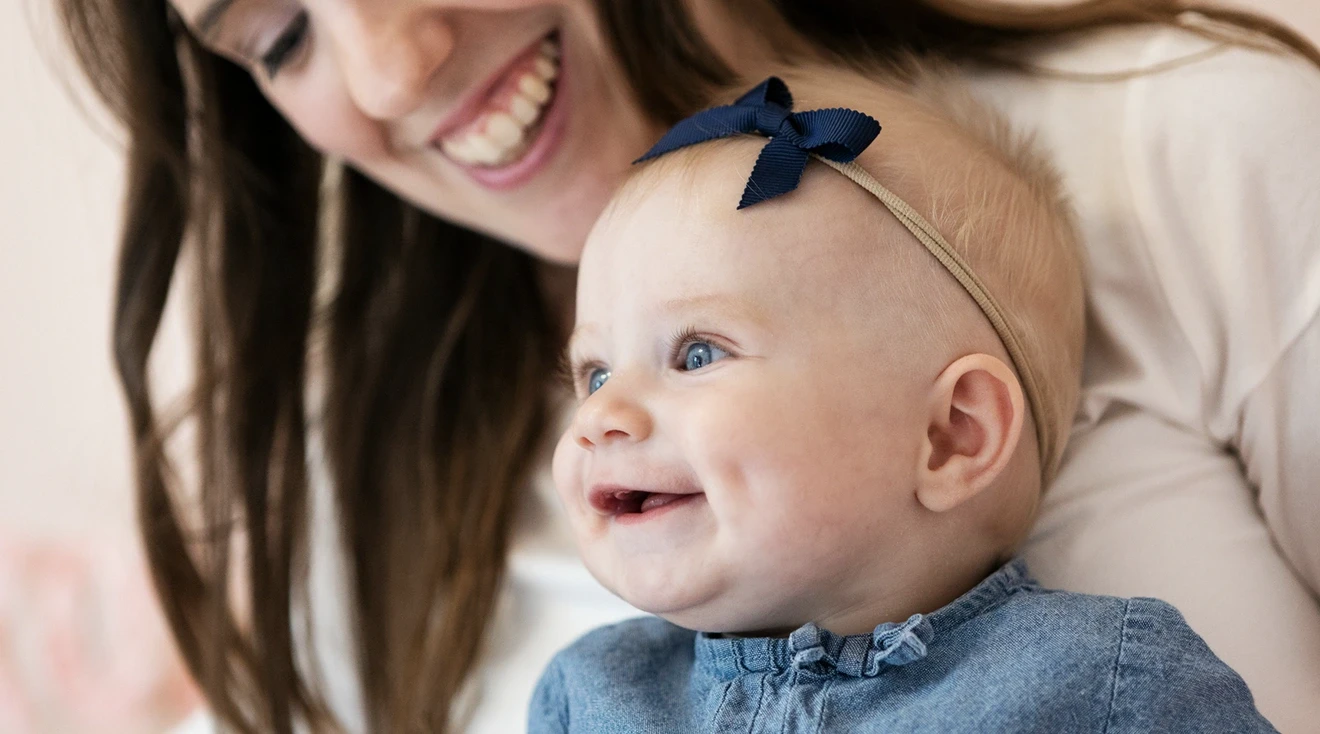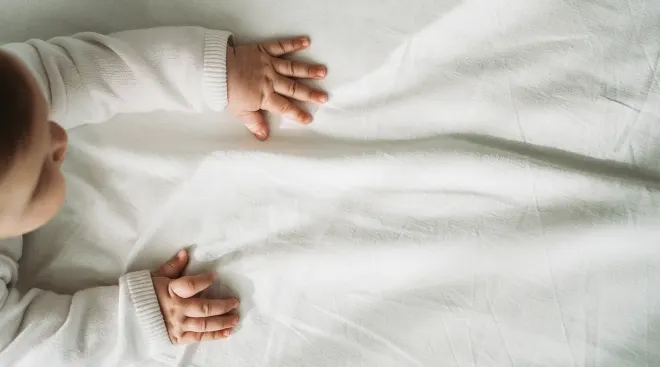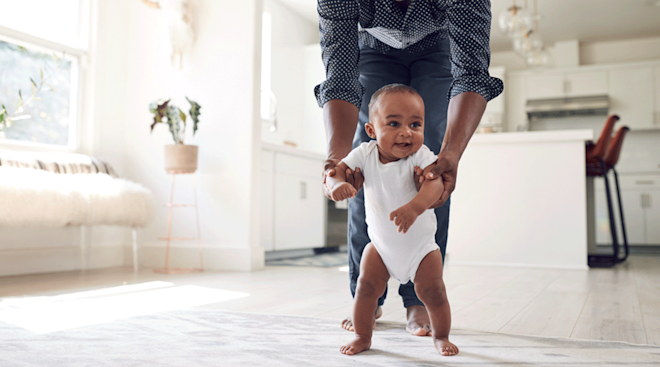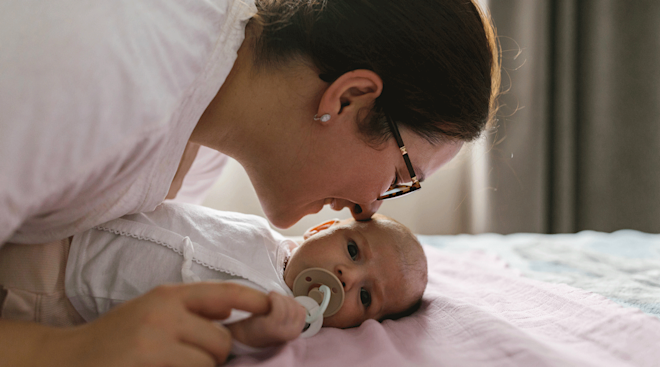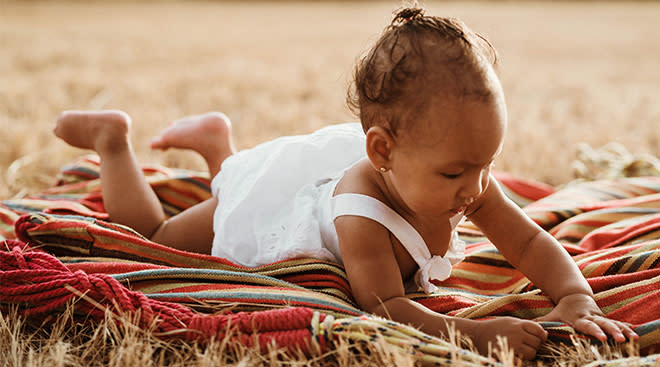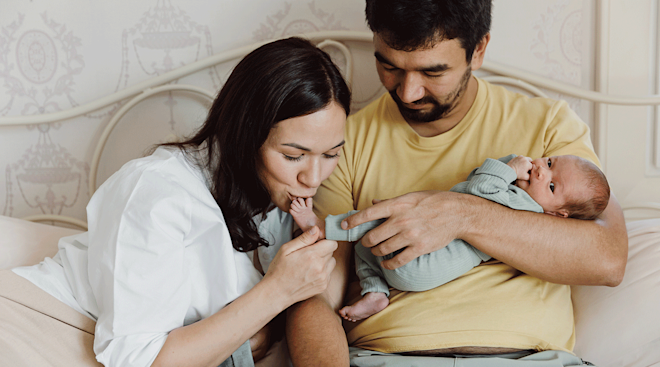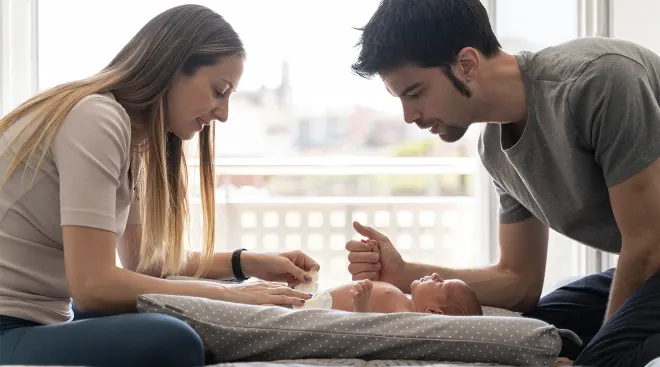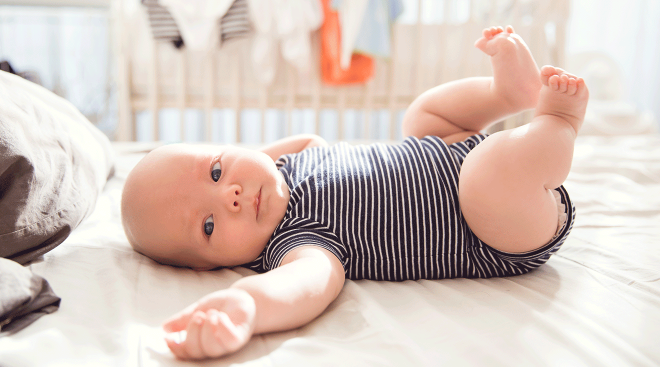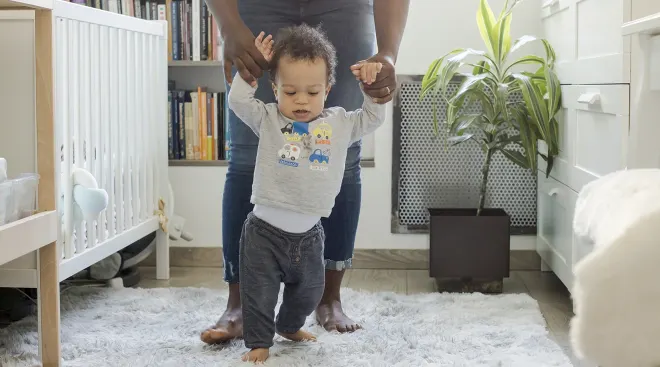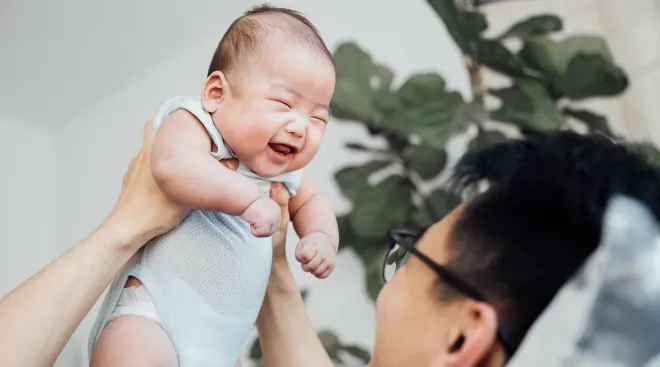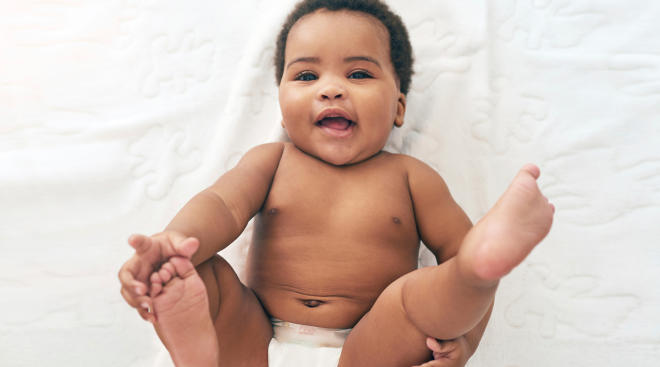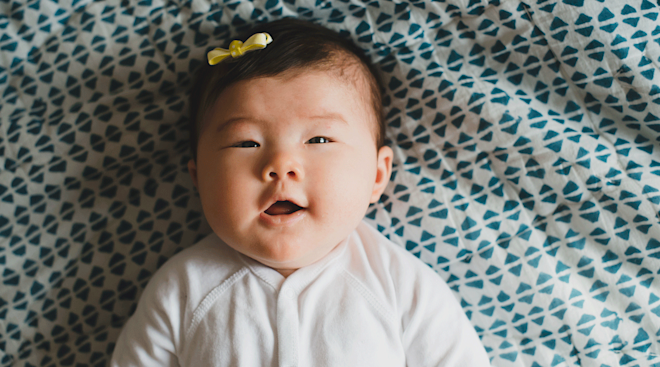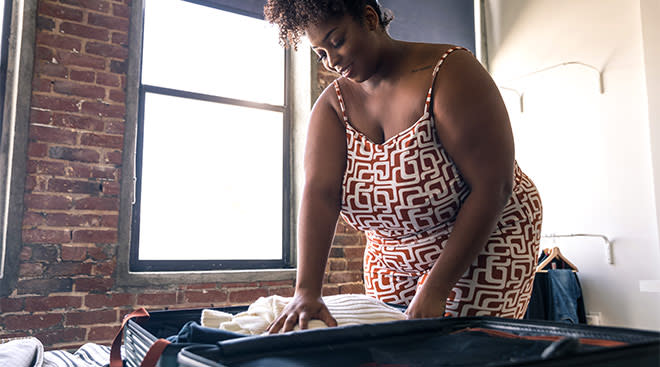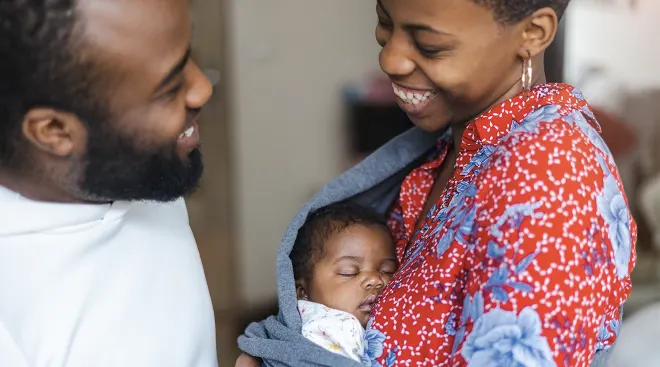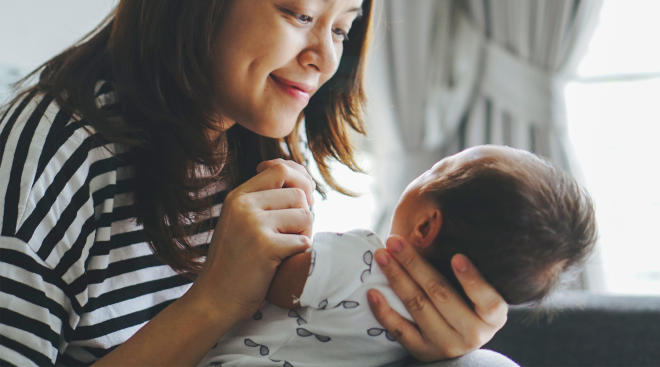When Do Babies Start Smiling?
Watching baby grow and explore the world around them is a journey like no other. And that first exciting year is filled with a plethora of developmental milestones that’ll make your heart swell with pride and joy. One moment you’ll never forget? Baby’s first smile. Suffice it to say, that silly smirk is contagious. So when do babies start smiling? The answer is a little more complicated than you might think. Here’s what to know about that precious little happy face, plus how to encourage baby to smile.
You’re eagerly awaiting some positive feedback from your newborn. So when do babies start to smile? Believe it or not, babies actually start learning and practicing how to smile in utero, around 33 weeks or even earlier, says Denise Scott, MD, an Oklahoma-based pediatrician and expert with JustAnswer. To that end, it’s not uncommon for parents to see baby smile on day one, adds Debra Goldenring, MD, a pediatrician at Summit Medical Group in Livingston, New Jersey.
It turns out, those initial smiles are actually the newborn smile reflex at play rather than a response to social stimulation. Reflex smiles occur randomly and are really just a biological way for baby to start practicing different skills. The smiling reflex is similar to many others baby practices in the womb, including sucking, blinking and crying. “It usually goes away around 2 months—about the same time the social smile develops,” adds Scott.
Why do babies smile in their sleep?
Sleep is actually one of the most common times to see baby smile during the newborn period, notes Scott. Similar to how we sometimes make expressions or talk in our sleep, babies make lots of funny faces while sleeping. These smiles usually occur while baby is in active or REM sleep.
Baby may also smile when passing gas; this could be because it helps them feel better, but no one really knows the exact reason, says Scott. More often than not—especially during the newborn stage—these baby smiles are reflex smiles rather than social ones, Goldenring explains. Of course, that truth doesn’t make those newborn smiles any less adorable!
Baby’s first reactive smile usually occurs between 8 and 12 weeks after a full-term birth. However, every baby develops at their own pace, and it’s not unusual for it to take up to three months for baby to smile on purpose, Goldenring says. Regardless of baby’s age, it’s a key milestone in infant development, as it signals that their vision, hearing and nervous system are mature enough to be able to zero in on your face and eyes, and that they also identify a smile as a way of communicating with the world around them, says Scott.
As for who’s on the receiving end of that sweet gummy grin—it’s usually those whose faces and voices are most familiar, such as parents, siblings and other caregivers. “As they get older, baby may also smile in response to an unfamiliar voice or face that’s interacting with them,” Scott says. This friendly phase usually lasts until baby is 8 or 9 months and begins to develop stranger anxiety. At this point, they may start to, once again, save smiles for familiar faces and loved ones.
Newborn smile reflex vs. baby’s social smile
Initially, it can be hard to spot the difference between the newborn smile reflex and baby’s social smile. But duration and engagement level tend to be the main distinguishers for each type of baby smile. The newborn smile reflex can happen anytime, even when baby is asleep, while baby’s social smile happens when they’re alert and awake. Moreover, reflex smiles tend to last only a few seconds and often happen when baby isn’t looking at anything in particular; it can also look like a lopsided grimace. Keep in mind that not all babies exhibit reflex smiles, and they’re so quick and fleeting, it can be hard to identify them.
On the other hand, an intentional baby smile will usually last longer and may involve engaging eye contact. In fact, Goldenring suggests looking into baby’s eyes during their smiles to discern baby’s engagement level. “They want to connect and will hold it until they get feedback in the form of a smile or eye contact from you,” she says.
Hoping to get more bubbly behavior and sweet reactions from your little one? Engagement and consistency are key to encouraging baby’s smile and social development. Some tactics to get baby smiling include:
-
Smile at baby—a lot: Goldenring suggests showing baby your widest grin whenever possible. “Babies are very good at mimicking. If they see you smile a lot, chances are they’ll try to emulate the expression,” she says. Also try clapping or talking to them, as well as making eye contact when they smile. The more you interact, the more you’ll be able to see unique differences in the types of smiles baby gives.
-
Be dramatic: Newborns are still developing the ability to see further away, so make sure they have plenty of opportunities to be up close and face-to-face with you—about a foot away is ideal. According to Scott, babies with more face-to-face interactions tend to smile more. While you’re at it, talk or sing to baby and exaggerate your expressions: Let your eyes get wide, smile broadly and show baby what a happy face looks like.
-
Try surprising baby: Games like peekaboo are also great. The element of surprise at being confronted with your familiar face can excite baby enough to elicit a baby smile. With that in mind, engage baby with unexpected delights. Introduce toys that squeak or make different noises, offer stuffed animals with various textures or read a book and change your voice for the different characters.
-
Engage in physical play: If you’re wondering how to make baby smile, start by engaging with them physically. Tickle their belly or give them raspberry kisses as you change their diaper. You can also sit on an exercise ball and gently bounce up and down with baby, or lie on your back on the floor and lift baby up into the air, bringing them down for a sweet kiss. “The more you engage with baby, the more they’ll want to engage with you,” Goldenring says. As baby learns that a smile elicits an even bigger grin from you, they’ll up the ante by adding laughter, coos and other cues that show you they’re your biggest fan.
Another key factor in getting baby to smile? Ensuring they’re well rested. Just like adults, baby won’t smile much if they’re hungry, tired or cranky, explains Scott. It’s also important to remember that every baby is different. “Some babies are more serious than others and may be more selective with their smiles,” Goldenring adds. “This says nothing about whether or not they love you—it’s just a sign of how they’re naturally wired.” And don’t feel bad if another family member (or even a stranger at the supermarket!) gets that first coveted baby smile. It’s not a sign that your little one likes them better—it’s just their way of showing interest in someone or something.
“Baby will likely be smiling at 3 months. But if baby doesn’t smile often, that doesn’t mean anything is wrong with them. Just like adults, babies have different temperaments,” says Goldenring. That said, if baby hasn’t smiled in the first few months of life and you’re concerned, try observing their level of engagement with the world.
Regardless of baby’s smile status, by the time they’re 3 months old, they should be “communicating” with you, other caregivers and even strangers with eye contact and vocal expressions (for example, making protesting noises when they’re pulled away from the bottle or breast). If baby isn’t showing these behaviors, talk to your pediatrician. “Often, a parent’s concern is that if baby doesn’t smile, it means they’re autistic. But autism isn’t something that’s diagnosed in infancy,” says Goldenring. Autism and other spectrum disorders generally aren’t identified until a child is 18 months to 2 years old. Furthermore, baby might not be smiling because of a vision problem that needs to be addressed or another unidentified issue, she adds. Whatever the reason, if baby isn’t smiling or engaging, it’ll be something your pediatrician wants to hear about.
The bottom line? When it comes to making baby smile, you don’t need to have the comedy chops of a sitcom star. The more smiles you give to baby, the more you’ll be rewarded back. If it hasn’t happened yet, know that baby will “cheese” for you when they’re good and ready. In the meantime, sit tight and have your camera ready for the big moment.
Watch: 10 Signs Baby Likes You
Plus more from The Bump:
Please note: The Bump and the materials and information it contains are not intended to, and do not constitute, medical or other health advice or diagnosis and should not be used as such. You should always consult with a qualified physician or health professional about your specific circumstances.
Denise Scott, MD, is a pediatrician with JustAnswer and a pediatric endocrinologist based in Oklahoma with over 30 years of experience. Certified in culinary medicine, Scott also runs the blog Feed Future Health and is the author of Feed Your Child's Future Health: Prevent Disease before it Starts. She received her medical degree from the University of Texas Medical Branch and completed her residency at the University of Oklahoma Health Sciences Center, with a fellowship at the National Institutes of Health.
Debra Goldenring, MD, is a pediatrician at Summit Medical Group in Livingston, New Jersey, with over 20 years of experience. She received her medical degree from Rutgers New Jersey Medical School and completed her residency at NewYork-Presbyterian/Columbia University Irving Medical Center.
Learn how we ensure the accuracy of our content through our editorial and medical review process.
Navigate forward to interact with the calendar and select a date. Press the question mark key to get the keyboard shortcuts for changing dates.





